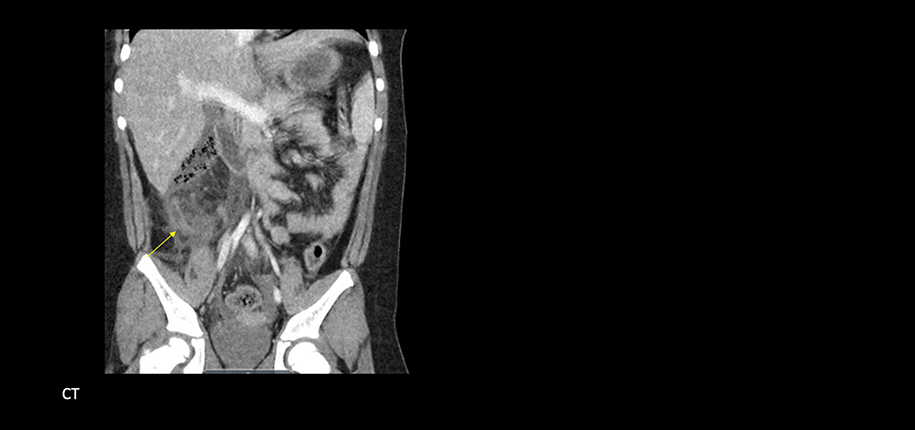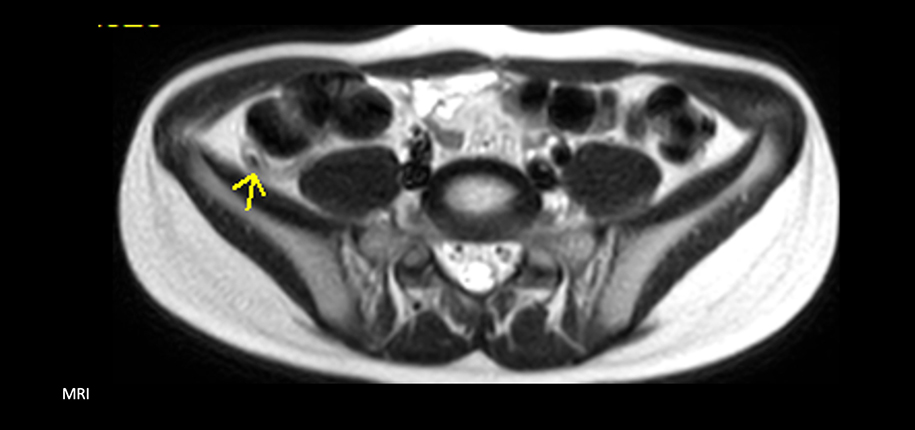
Back in April 2021, Dr. Viet Le introduced MRI to the tool box of diagnosing appendicitis at Cincinnati Children’s. At the time, MRI services were only available at the Main Campus. We are proud to announce that our MRI appendicitis exams are now offered at the Liberty Campus! Scan protocols have been fined-tuned and modified to improve image quality as well as efficiency. The length of these studies has greatly improved and decreased from 15 minutes down to 5 to 6 minutes. Currently, MRI appendicitis scans are offered weekdays during daytime hours.
Appendicitis affects 70,000 children per year in the United States. It is the most frequent cause for emergency abdominal surgery in childhood. There can be a wide range of symptoms, with the most common can have a wide range, but typically being with new onset abdominal pain (in the center or right lower part of the belly). Your child could also experience a low-grade fever, nausea, vomiting, constipation, or diarrhea. If you make a trip to the emergency room, doctors could choose from several tests to help make a diagnosis. These include: ultrasound, CT, or MRI. Why are different tests ordered?
How do you know which test is best?

According to our division director of thoraco-abdominal imaging Section Chief, Dr. Rama S. Ayyala, if appendicitis is suspected, ultrasound is the best first-line imaging test intervention. Reasons for this include:
The appendix is a small finger-shaped pouch that is attached to the large intestine. It is wiggly, and it moves around within the right lower quadrant of the abdomen. Sometimes it is easily seen with ultrasound, and other times it is not. It can be hidden behind air bubbles, stool, or other intestines. In this scenario, your physician will request another type of imaging.

Traditionally, CT has been the next imaging option. It includes:
While CT is reliably diagnostic, it is invasive because your child has to get an IV for contrast, and he/she may have to drink for the study. Although we use a minimal dose that’s uniquely tailored for your child, CT uses radiation (X-rays).

Our latest imaging option tool now includes MRI. Here are facts about MRI:
The MRI scanners in Radiology are filled with scheduled patients throughout each day. Emergency requests are reasonably squeezed into the schedule as time permits. No matter what imaging modality is used for your child, you can be assured that the Cincinnati Children’s Radiology team will give you a safe, definitive diagnosis. As our MRI resources grow, we will be sure to expand our services to you.

Angie has been part of the Cincinnati Children’s Radiology family since 1996. Over the years, she has worked in X-Ray, Cat Scan, and most recently in MRI. Currently, she is part of the Outpatient MRI Team, primarily working at the Liberty Township, Green Township, and Kenwood Campuses. Angie enjoys working in a stimulating environment and learning new things each day. In her free time, she stays active with her husband, two teenage daughters, and her Golden Retriever, Sonny.
Angela Asher, RT (R)(CT)(MR) author; Rama S. Ayyala MD, contributor; Glenn Miñano, editor; Meredith Towbin, copy editor
Featured Image: Image by Darko Djurin from Pixabay